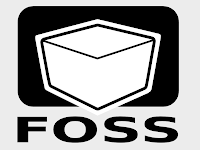Descubrimientos de una inteligencia artificial que supera el test de Turing
On the Internet, everybody knows you're a chatbot.
Buscar en Mind w/o Soul
martes, junio 30, 2009
Hash: Password checkword
Puede servir para programar una extensión Firefox para la usabilidad de formularios de login (mostrando la checkword para comprobar si ha habido errores al teclear)
http://wijjo.com/PasswordHasher
http://hashapass.com/
http://wijjo.com/passhash/passhash.html
Smart.fm - aprender sin darse cuenta
jueves, junio 25, 2009
Security vs usability in login passwords
Thinking of this as an information problem instead of (just) a security one,
what is needed to solve it is something like the hash codes as used in
cryptography.
You don't really need to show the *whole* password, just enough
information derived from it so that the user will notice if there was
an error. For an example on how it could work:
- Say, the chosen password is HOMELAND.
- As a simple hash, remove every second letter: HMLN
- Shift each letter one character down: GLKM
- For this result to be usable, combine each obtained letter with the
nearest vowel: GILOKOMO
If the user mistypes the password, a different check-word will be produced.
For example: HOPELAMD -> HPLM -> GOKL -> GIOUKOLO *error, the
password is wrong.
Of course, a real hash function should be used that utilizes *all* the
information in the original password, not half of it! The important
property of a hash function is that the original information can't be
recovered from it, so the password is safe. Much better for security
than a plain-text exposed password, isn't it?
This process has a small usability problem in that you'll have to
learn the check-word for every new used password, but login is such a
repetitive procedure that this learning should happen quickly.
Password field design solutions
http://www.viget.com/advance/password-fields-are-annoying/
martes, junio 23, 2009
Interactive Fiction design
1) The pieces of text you write are the player's reward for thinking of the command that calls them up. So make them rewarding. Every diegetic piece of text should have something to recommend it: a joke, a nice bit of imagery, a character insight, something.
2) The player should always have a pretty compelling reason to type something other than QUIT. The fact that something came out of your head may by itself make it fascinating to you, but you'll have to put in some other source of interest and motivation before players will find it so.
3) Get into the habit of finishing things. One of the reasons I've released so many short pieces while working on the long ones is to keep from getting discouraged at working and working and not yet having anything to show for it. One of the best pieces of advice I ever received when I was just starting to write regular fiction was to stop writing the first chapters of epic novels and to instead write a three-page story from start to finish. And then to write a ten-page story, and then a 25-page story, and then an 80-page story, and only then to think about writing a novel. Something similar might well be true for IF. Because of course, you can't write a good game if you don't complete it.
lunes, junio 22, 2009
jueves, junio 18, 2009
UI patterns for Learnability gallery
http://www.usabilityinstitute.com/resources/learnabilityGallery.htm

miércoles, junio 17, 2009
Itsme.it: A non-desktop metaphor for user interfaces
Articulo
User story metaphor: Based on stories and venues. From what I've read, it looks a lot like blogs in the blogsphere.

domingo, junio 14, 2009
Principios de diseño
Complexity tutorial
We’ve been through balance, contrast, direction, economy, emphasis, rhythm and how to apply them in your designs.

viernes, junio 12, 2009
FOSS cube metalogo, the original
I've created a logo based in the outline of a Compiz-Beryl cube. It should work as a meta-logo to combine it with the logos from several popular Free-Open Source Software projects. This could help create a common brand identity for such diverse ecosystem.
See the result:

And see how it combines with some other logos.
I've published the .svg source under the Creative Commons attribution, share-alike license.
Follow-ups:
http://www.kde-look.org/content/show.php?content=106947
http://www.kde-look.org/content/show.php?content=106948
Más inspiración:

martes, junio 09, 2009
On Linux and meta-logos
Given the plurality and diversity of the FOSS ecosystem, the branding effort needs a meta-logo. People really identifies the different client-side kinds of computers through the bitten Apple, the flying Window and the "Intel inside" circle. Tux won't work at that level, it's more of a mascot than a logo.
Thinking of it, there's a distinctive visual landmark of the modern Linux/BSD client, and that's the Compiz-Fusion Rotating Cube. See the outline created by the cube borders in this screenshot:
 It is immediately recognizable as a Linux desktop. It can be easily stylized, it's modern and dynamic, doesn't resembles any popular logo, and the best: it works as a meta-logo.
It is immediately recognizable as a Linux desktop. It can be easily stylized, it's modern and dynamic, doesn't resembles any popular logo, and the best: it works as a meta-logo.The Cube is a container, so it can be mixed with the logos of any other project. Think Cube containing the K gear, Cube containing Ubuntu circle, Cube containing Google's Android...
The unifying appearance of other desktop elements (colors, wallpapers...) a-la Tango icons guidelines can help, but it will never by adopted in a universal enough way. But a single unified silhouette can be put anywhere, doesn't require rebranding of complete products, and is already quite popular and recognizable as FOSS.
lunes, junio 08, 2009
sábado, junio 06, 2009
11 trucos para sacar buenas instantáneas
http://digital-photography-school.com/11-tips-for-better-candid-photography

Metáfora para programación
Otra metáfora quizá más expresiva para referirse a la programación en general y a la programación de interacción en particular, es el mundo de la moda y la alta costura. Los programadores tienen mucho de artistas que utilizan una base muy técnica para hacer creaciones, que deben ser prácticas a la vez de atractivas.
